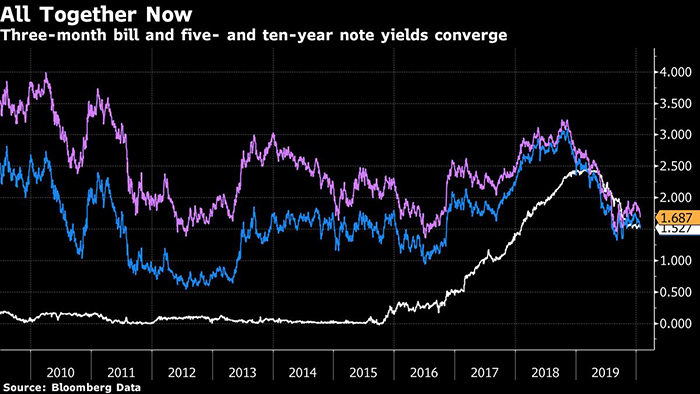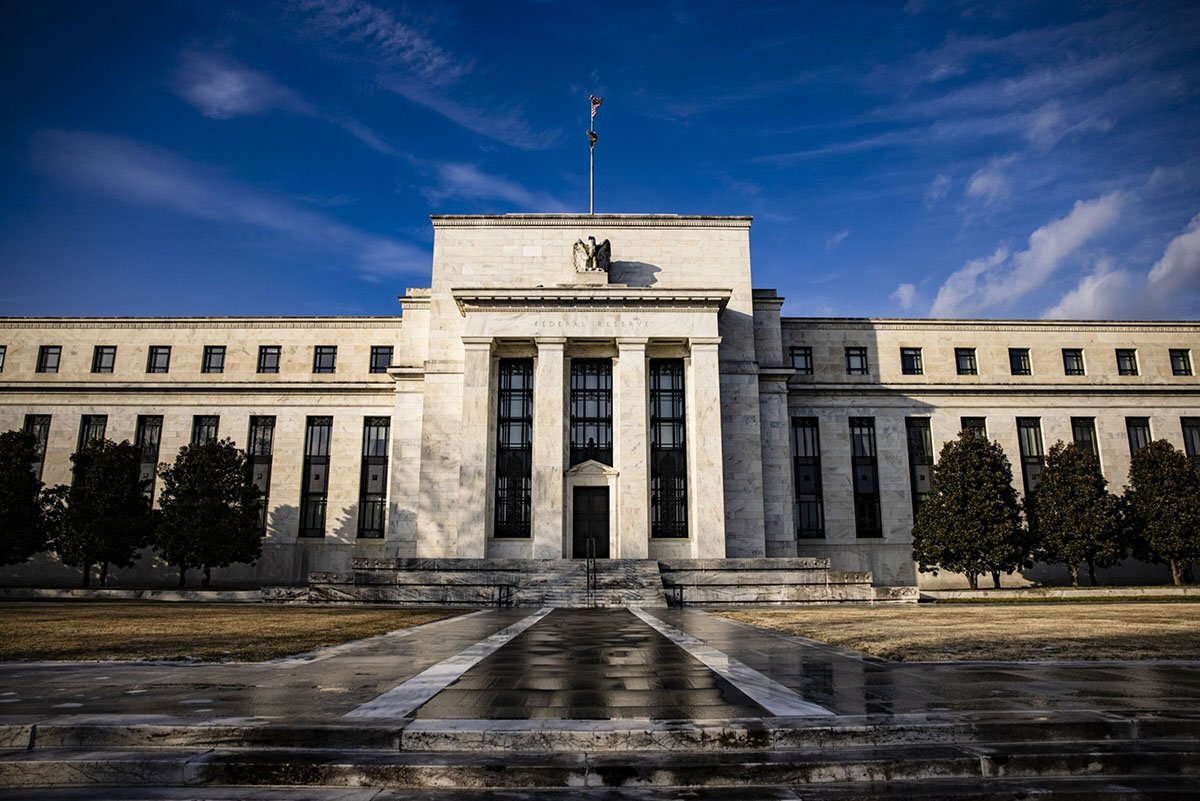Inside the Fed, it's steady-as-she-goes. Investors see thisweek's meeting as an easy call, with officials set to vote forleaving their policy rate unchanged for now.
|Outside, the conversation is quite different. Formerpolicymakers and veteran Fed watchers are increasingly preoccupiedwith what the central bank will be able to do, and the tools itwill need, when the next downturn arrives.
|The debate keeps throwing up bold new ideas—from direct cashinjections to a digital dollar to explicit coordination betweencentral bankers and the politicians who control budgets, an ideafloated by JPMorganChase & Co. chief Jamie Dimon in Davos last week. And the Fedis, in fact, halfway through a review of tools and communications,a discussion that may feature prominently at the meeting tomorrowand Wednesday.
|But that exercise isn't likely to deliver the kind of radicalinnovation that Dimon and others have sketched. Fed Chairman JeromePowell and his colleagues are indicating that any changes will bemarginal. The 2 percent inflation target is sacrosanct, talk aboutfiscal-monetary cooperation is off-limits, and Fed policymakers areunimpressed by Europe's experiment with negative interest rates.
|"At this point, the Fed is practically out of ammunition tofight the next recession," said Andrew Levin, a Dartmouth Collegeprofessor and former senior adviser to Janet Yellen. "Fed officialsshould engage in frank discussions with Congress about how tostrengthen the Fed's monetary policy toolbox."
|
Former New York Fed open market account manager Simon Potter andeconomist Julia Coronado are working on a proposal where the Fedwould engage in direct transfers of cash into consumer accounts tostimulate spending in a recession. Economists such as Coronado andPotter are looking at unconventional strategies because of thelevel of current interest rates. More than a decade into theexpansion, Treasury yields remain ultra-low.
|The Fed's target range for its benchmark policy rate iscurrently at 1.5 percent to 1.75 percent, and policymakers areexpected to keep it unchanged Wednesday.
|Remarkably, the 10-year Treasury yield—at 1.68 percent in lateFriday trading—is below the top range of the fed funds rate.Five-year Treasuries yield about 1.5 percent.
|That means quantitative easing—a bond-buying program thatpolicymakers deployed in the last financial crisis—would havelittle room to push nominal Treasury yields lower after cuttingtheir policy rate to zero.
|That's in part why calls for thinking outside the box aregrowing. Former Fed Vice Chairman Stanley Fischer and former SwissNational Bank Chairman Philipp Hildebrand have proposed withco-authors that the central bank and fiscal authorities teamup to hitthe inflation goal.
|Other proposals in recent years that are still resonatinginclude one by Rutgers Universityeconomist Michael Bordo and Dartmouth's Levin in 2017 that thecentral bank issue digital currency to accounts held by people andbusinesses at regulated banks. The accounts would pay the rate theFed pays on its overnight bank lending rate. The Fed could reducethe rate to negative to stimulate spending in a downturn asinvestors and households use cash that would be at risk of losingvalue.
|President Donald Trump has also called for negative interestrates and said the U.S. is missing an opportunity. But Fedofficials worry that such a policy could introduce distortions andrisk into the financial system, minutes from the October meetingshow.
|Another idea by former Fed Chairman Ben S. Bernanke in 2016 would develop a"money-financed fiscal program," where the central bank printsmoney for Congress to spend on public works and tax rebates.
|JPMorgan's Dimon said in a Jan. 22 CNBC interview thatmonetary and fiscal policy have previously been coordinated toaccomplish economic goals. "They did it together in the GreatDepression, and they did it to get out of World War II," hesaid.
|Powell has insisted the Fed stay in its lane and avoid fiscalpolicy discussions—the purview of the federal government. But bytrying to maintain independence, the Fed also may lose it. If theFed's tools were less effective in a period of high unemployment,Congress could revisit what it wants the Fed to do.
|The risk is that the central bank might adopt modest frameworkchanges that create doubt about their recession-fighting tools.That skepticism could put more downward pressure on Treasury yieldsand further cement low inflation expectations among the public,further reducing the room the Fed has to cut rates.
|For now, Fed officials are mostly counting on buying more bonds,verbal pledges to keep their interest rate low, and modest tweaksto their inflation goal, such as setting policy so that pricesovershoot their target for a while to make up for past misses.There is also a discussion about targeting short-term Treasuryyields.
|
See also:
Assessing the Impact of the Fed's Interest Rate EndGame
|
That's the kind of conversation they should be having, saidLewis Alexander, chief U.S. economist at Nomura SecuritiesInternational Inc.
|"The Fed has been given independent authority over a narrow setof policy tools with a well-defined objective," he said. "Respectfor the democratic process that created the Fed dictates that theFed should respect those limits."
|Trump's attacks on the Fed may also be constraining thediscussion. "They live in a scary neighborhood," said VincentReinhart, chief economist at Standish Mellon Asset Management.
|Non-standard policies are "a really tough discussion for an FOMCmember without being perceived as someone who wants to changethings dramatically and risk how the Congress and the Fed areseparated," said Torsten Slok, chief economist at Deutsche Bank AG.However, "we are moving in a direction where, as unpleasant asthese discussions are, it is inevitable that we have them."
||
|
Copyright 2020 Bloomberg. All rightsreserved. This material may not be published, broadcast, rewritten,or redistributed.
Complete your profile to continue reading and get FREE access to Treasury & Risk, part of your ALM digital membership.
Your access to unlimited Treasury & Risk content isn’t changing.
Once you are an ALM digital member, you’ll receive:
- Critical Treasury & Risk information including in-depth analysis of treasury and finance best practices, case studies with corporate innovators, informative newsletters, educational webcasts and videos, and resources from industry leaders.
- Exclusive discounts on ALM and Treasury & Risk events.
- Access to other award-winning ALM websites including PropertyCasualty360.com and Law.com.
*May exclude premium content
Already have an account? Sign In
© 2024 ALM Global, LLC, All Rights Reserved. Request academic re-use from www.copyright.com. All other uses, submit a request to [email protected]. For more information visit Asset & Logo Licensing.







